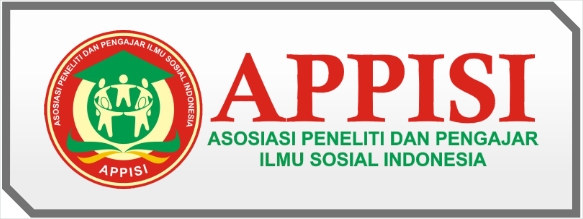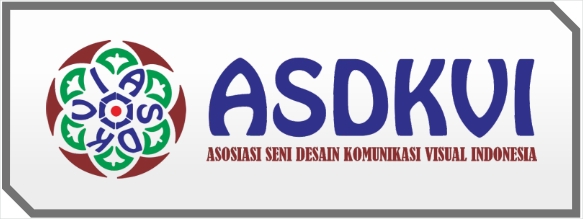Komunikasi Interpersonal Termediasi Instagram Live dalam Upaya Resolusi Konflik
DOI:
https://doi.org/10.59581/harmoni-widyakarya.v2i2.3387Keywords:
Conflict Resolution, Instagram, Interpersonal Communication, Mediated CommunicationAbstract
Technological developments have changed the way humans handle conflict. Face-to-face communication has become the least used method of conflict resolution. Nowadays, conflict resolution is established through mediated communication, one of which is the social media Instagram. This research uses a qualitative approach and attempts to explain the role of Instagram in mediating interpersonal communication processes to resolve conflicts related to gender issues. @poppyrahardjo's Instagram Live session was used as a corpus in this research. The research results show that interpersonal communication mediated by Instagram Live can provide space for communicators to open up and establish a similar perception of their opinions on gender issues. There are three stages to establishing a similar perception, discourse development, openness process, and perception equality process.
References
Anindya, A., Hanana, A., & Elian, N. (2021). Upaya Meningkatkan Kesadaran Gender Kaum Muda Melalui Pesan Kesetaraan Gender Di Media Sosial Instagram. Jurnal Ranah Komunikasi (JRK), 5(2), 103. https://doi.org/10.25077/rk.5.2.103-112.2021
Catherina, C., Boer, R. F., Talia, M., & Cecilia, S. (2020). Pembentukan Konsep Keintiman Berdsarkan Social Information Processing Theory pada Komunitas Sehatmental.id. Jurnal Komunikasi, 14(1), 63–72. https://doi.org/10.21107/ilkom.v14i1.6035
Chen, Q., Zhang, Q., Zhao, S., & Li, C. (2024). Trusting strangers: The benefits of reciprocal self-disclosure during online computer-mediated communication and mediating role of interpersonal liking. International Journal of Psychology, 59(1). https://doi.org/10.1002/ijop.12957
Cooney, G., Mastroianni, A. M., Abi-Esber, N., & Brooks, A. W. (2020). The many minds problem: disclosure in dyadic versus group conversation. Current Opinion in Psychology, 31, 22–27. https://doi.org/10.1016/j.copsyc.2019.06.032
Creswell, J. W. (2014). Research Design: Qualitative, Quantitative, and Mixed Methods Approaches. SAGE Publications. https://books.google.co.id/books?id=4uB76IC_pOQC
Danardana, A. (2019). Penggunaan Komunikasi Bergaya Bahasa Percakapan Dalam Membangun Brand Awareness Di Tahapan Content Marketing (Studi Deskriptif Kualitatif Pada Media Daring Mojok.Co) [UIN Sunan Kalijaga]. http://digilib.uin-suka.ac.id/id/eprint/33349
DeVito, J. A. (2016). The Interpersonal Communication Book (Global Edi). Pearson Education Limited.
Fara Hasna Arifah, & Yuli Candrasari. (2022). Pola Komunikasi Virtual Dalam Komunitas Games Online : (Studi Netnografi Pada Komunitas Facebook Genshin Impact Indonesia Official). Jurnal Ilmiah Teknik Informatika Dan Komunikasi, 2(2 SE-Articles), 55–66. https://doi.org/10.55606/juitik.v2i2.206
Holmes, M., & Yarhi-Milo, K. (2017). The Psychological Logic of Peace Summits: How Empathy Shapes Outcomes of Diplomatic Negotiations. International Studies Quarterly, 61(1), 107–122. http://www.jstor.org/stable/44510868
Jung, Y. J., & Crossley, S. (2022). Stylistic alignment in natural conversation involving second language speakers. Applied Linguistics Review. https://doi.org/10.1515/applirev-2020-0048
Karletsos, D., Hutchinson, P., Leyton, A., & Meekers, D. (2021). The effect of interpersonal communication in tobacco control campaigns: A longitudinal mediation analysis of a Ghanaian adolescent population. Preventive Medicine, 142. https://doi.org/10.1016/j.ypmed.2020.106373
Konjin, Elly A; Utz, Sonja; Tanis, Martin; Barnes, B. S. (2008). How Technology Affect Human Interaction. In Mediated Interpersonal Communication (p. 398). Routledge. https://doi.org/10.5860/choice.46-2496
Kriz, T. D., Kluger, A. N., & Lyddy, C. J. (2021). Feeling Heard: Experiences of Listening (or Not) at Work. Frontiers in Psychology, 12. https://doi.org/10.3389/fpsyg.2021.659087
Laksana, N. Y., & Fadhilah, A. (2021). Computer-mediated communication and interpersonal communication in social media Twitter among adolescents. Journal of Social Studies (JSS), 17(1), 65–78. https://doi.org/10.21831/jss.v17i1.39015
Leth, P. (2021). Utterance Interpretation and Actual Intentions. Axiomathes, 31(3). https://doi.org/10.1007/s10516-019-09462-x
Littlejohn, S. W., Foss, K. A., & Oetzel, J. G. (2017). Theories of Human Communication. In TA - TT - (Eleventh e). Waveland Press, Inc. Long Grove, Illinois. https://doi.org/LK - https://worldcat.org/title/965805053
Martin, C., & MacDonald, B. H. (2020). Using interpersonal communication strategies to encourage science conversations on social media. PLoS ONE, 15(11 November). https://doi.org/10.1371/journal.pone.0241972
Nurhasanah, N., & Saepudin Kanda, A. S. (2024). Pengaruh Media Sosial Instagram Terhadap Perilaku Masyarakat. Intelletika : Jurnal Ilmiah Mahasiswa, 2(2), 33–39. https://doi.org/10.59841/intellektika.v2i2.922
Park, C. H., Song, J. H., Lim, D. H., & Kim, J. W. (2014). The influences of openness to change, knowledge sharing intention and knowledge creation practice on employees’ creativity in the Korean public sector context. Human Resource Development International, 17(2), 203–221. https://doi.org/10.1080/13678868.2013.876256
Pawito. (2007). Penelitian Komunikasi Kualitatif. LKiS Yogyakarta.
Perlstein, S. (2023). Risk perception and interpersonal discussion on risk: A systematic literature review. Risk Analysis. https://doi.org/10.1111/risa.14264
Pollack, J. S., Parks-Stamm, E. J., Shaw, N., & Weiner, A. S. (2022). Negotiating With Those Like Me: Similarity Salience Increases Positive Attitudes in Imagined Negotiation With an Out-Group Member. Peace and Conflict, 28(4). https://doi.org/10.1037/pac0000621
Rosler, N., Hameiri, B., Bar-Tal, D., Christophe, D., & Azaria-Tamir, S. (2021). Current and Future Costs of Intractable Conflicts—Can They Create Attitude Change? Frontiers in Psychology, 12(May), 1–11. https://doi.org/10.3389/fpsyg.2021.681883
Skoura-Kirk, E. (2023). ‘Through no fault of their own’: Social work students’ use of language to construct ‘service user’ identities. Qualitative Social Work, 22(4). https://doi.org/10.1177/14733250221088208
Sopiyan, W., Hidayat, R. H., Setiawati, R., & Hadi, F. N. (2022). Integrasi Sosial Dalam Masyarakat Beragama Sebagai Mediasi Konflik Sosial. El-Ghiroh, 20(02), 219–234. https://doi.org/10.37092/el-ghiroh.v20i02.381
Talalu, Taufik R. Tike, Arifuddin, & Amin, M. (2022). Seputar Teori Pemrosesan Informasi Sosial ( Social Information Processing ). Jurnal Komunikasi Dan Penyiaran Islam, 1, 12–21. https://ejournal.iaingorontalo.ac.id/index.php/saf/article/view/581
Warren, M. (2006). Features of Naturalness in Conversation. John Benjamins Publishing Company.
Wooffitt, R. (2005). Conversation Analysis and Discourse Analysis: A Comparative and Critical Introduction. SAGE Publications Ltd.
Xie, X. (2022). Conversation Analysis of Conflict Talk between Couples in Why Women Kill. International Journal of Education and Humanities, 5(2). https://doi.org/10.54097/ijeh.v5i2.2132
Downloads
Published
How to Cite
Issue
Section
License
Copyright (c) 2024 Esfandani Peni Indreswari

This work is licensed under a Creative Commons Attribution-ShareAlike 4.0 International License.














